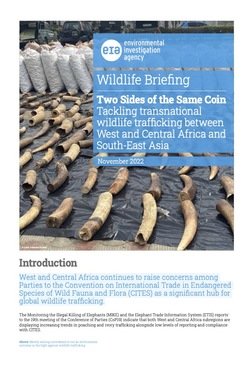By Jos´e Luis Carpio Domínguez , In´es Arroyo Quiroz , María Teresa Villarreal Martínez , Jesús Ignacio Castro Salazar
This study examines the possession of Tigers (Panthera tigris) as pets in Mexico through statistical analysis of governmental seizures on a period of 11 years, a review of socio-political factors related to this phenomenon and an analysis of a particular illicit supply network of a Tiger (P. tigris) specimen seized from a criminal group in northern Tamaulipas, Mexico. We found that socio-political factors such as the prohibition on the use of animals for circuses; environmental regulation strategies; the dominance of criminal groups in most of the Mexican territory and their traditional interest in exotic animals have an influence in the presence of tigers in private homes and ranches. This study contributes to the theoretical understanding of the possession of exotic animals, wildlife illegal networks and wildlife trafficking in Mexico.
Forensic Science International: Animals and Environments. Volume 2, December 2022,





















